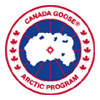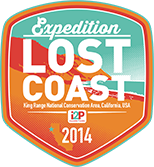The Unique Geology and History of the Lost Coast:
In the second half of the 19th century, California's population and economy was booming which put an increased demand on forest products of redwood and Douglas fir, and tan oak bark for tannin used in San Francisco's leather tanneries. Little ports along the Mendocino and Humboldt coasts started constructing sawmills, towns, even narrow-gauge railroads to haul timber to mills and lumber to wharfs at ports like Usal, Needle Rock and Bear Harbor. A similar boom occurred after WWII.
These old logging towns are no longer active, and while these booms took their toll on the redwoods and surrounding natural resources, nature is recovering in these areas as the Lost Coast is now set aside from development as a preserve. The importance of setting aside areas of the nation for their natural beauty to be appreciated by all was emphasized by naturalists like John Muir, and thanks to their efforts we now have numerous national parks that are protected from human development. The National Park bill was passed in 1890 after Muir, the "Father of the National Parks," inspired the nation's leaders to preserve various natural areas through his writings.
Geology
In the region of the Lost Coast, several plates are grinding against each other. The plates involved are the Sierra Nevada Block, the Pacific plate, and the smaller Gorda plate. This is called a triple junction. This region experiences a high rate of earthquakes. In fact, just off the beaches of the Lost Coast is the North end of the famous San Andreas fault, and an earthquake of magnitude 9.0 (Richter scale) occurs in this region every 300 – 600 years.
The earth’s crustal plates float on the upper-most region of the earth’s mantle, the asthenosphere. Volcanic eruptions are injections of molten material from the asthenosphere through weak-spots in the planetary lithosphere. The lithosphere is broken into many pieces, called crustal plates that grind against each other, separate, or slide underneath each other. Earthquakes are the movement of the plates against each other. (http://earthquake.usgs.gov/earthquakes/map/)
The Gorda plate is slowly being driven under the North American plate by the Pacific plate. The energy in this collision is massive, and it is causing uplifting of this region of the Sierra Nevada Block. This uplift has created the dynamic and unique mountains chains separated by valleys that are aligned North – South in the geologic past, millions of years ago.
One mountain range the expedition will pass through is the King Range. In fact, there are several observable types of rock-formation in the King Range that were once difficult to understand how they got to where they are today.
Younger rock formations that were formerly ocean floor are found interspersed with continental rock formations. With the theory of plate tectonics becoming more widely accepted and understood throughout the last century, especially with the use of seismic waves to probe the structure of the planet's lithosphere, the rock formations of different origin in these mountains were then able to be rationalized. These relative locations of these rock formations, almost appearing to be mixed together, are evidence of tectonic plates having ground against one another several million years ago.
There is evidence that today, the major grinding force between plates has changed orientation, and it is now running East - West, and the ocean floor topography (e.g.; use Google Earth) shows young mountains being formed aligned East - West. The portions of the Coastal Mountains of Northern California that were formerly ocean floor are comparatively porous, and unstable. Compared to other ranges these mountains are relatively young, they are unstable and the probability of a major earthquake occurring. Add to this a dynamic and often stormy climate (and hence a low human population) drove civil engineers who were building the coastal highway of California to abandon the coast and seek more stable, less rugged terrain inland.
How i2P Education Works
Twice a year impossible2Possible selects five lucky youth between the ages of 17 - 21 to serve as 'Youth Ambassadors' on expeditions designed to complement school curriculum. Youth Ambassadors serve as the eyes and ears of students following in classrooms, relating to them real life learnings they experience in the field. Each remarkable expedition route is carefully chosen to highlight an academic curriculum designed by i2P and Simon Fraser University. State of the art information technology; video, text, images and sound allow Youth Ambassadors and participating classrooms to communicate from the field through social media sites and the i2P expedition website. The real life experience of an i2P expedition awaken and enhance a students' interest in the core curriculum of primary and secondary school education.
For More Information
Matt Howe
i2P Educational Coordinator and Logistics
mhowe@impossible2possible.com
612-508-5555
Jordan Thoms
i2P Social Network Advisor and Logistics
jthoms@impossible2possible.com
613-302-5572






